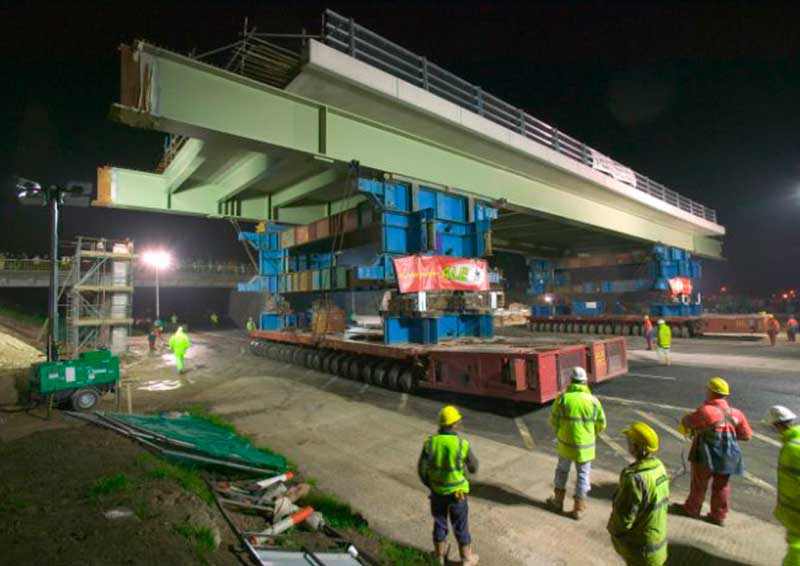Systems thinking
Contents |
[edit] Introduction
Systems thinking provides a framework for understanding complex issues and structuring problems to deliver substantially better results.
Civil engineering projects involve multiple stakeholders with differing motivations, purposes, aims, objectives and constraints – some of which inevitably conflict. This makes civil engineering projects inherently demanding. There has long been a recognition by everyone involved that UK industry needs to improve.
Traditional 'predict and provide' linear methods - brief, design, construct and deliver - work when uncertainties are low. However, there is often uncertainty due to financial, technological, political and other pressures, and consequent surprises.
Focusing on the lowest possible cost as an indicator of value has not provided solutions to these problems in the past. How modern infrastructure projects are run needs to be given a re-think, and one way of doing that is 'systems thinking'.
[edit] What is systems thinking?
In overview, systems thinking is joined-up thinking - getting the right information (what) to the right people (who) at the right time (when) for the right purpose (why) in the right form (where) and in the right way (how).
While this may be done intuitively for simple problems, when they are complex a framework is needed that supports learning together.
The first point in trying to achieve this is to understand that success is all about collaboration. Consequently, the first question is to find a clear and shared version of what success looks like.
All stakeholders need to understand and agree the purpose at every stage even if the definition of success changes over time. In order to clarify interdependencies between differing purposes it is imperative to address the questions 'why' before 'how' and to find ways to collaborate to add value for all.
Second, stakeholders should agree to admit that sometimes they do not know - there may be unforeseen and unrecognised sources of uncertainty. This can be the most difficult part of the conversation.
The third aspect of systems thinking is to understand project scope and remit - the system boundaries. Systems thinkers do this by thinking through the necessary and sufficient conditions for the success of any process, understanding processes as 'holons' that are both complete in themselves and the basis of higher level activity. This gives a new understanding of what we mean by 'practical rigour'.
[edit] How does systems thinking help?
Systems thinking is useful for construction projects because it enables the interests of all stakeholders to be included explicitly. This is vital in an increasingly demanding context with challenging requirements from multiple stakeholders.
Systems thinkers seek to understand the different needs and values of each stakeholder and then create a new value network that synthesises different needs and values in ways acceptable to all involved.
Systems thinkers can do this because they look for interdependencies between processes – many involving different stakeholders. This enables professionals to notice ways in which existing problems can be solved, or new combinations of needs or values be created.
In addition, because processes exist at all scales and stages of a project a systems thinking approach enables more creative problem solving at all stages of a project, rather than relying heavily on early stage design briefs to resolve major challenges.
Systems thinking helps engineers by:
- Providing a framework for understanding and managing uncertainty and complexity.
- Enabling multiple stakeholders to collaborate and add value.
- Structuring problems to facilitate joined-up thinking.
- Understanding better interactions between hard and soft systems.
- Providing practical rigour in identifying and agreeing what process holons are necessary and sufficient for success.
This article was originally published here by ICE on 28 March 2017. It was written by David Blockley and Patrick Godfrey.
--The Institution of Civil Engineers
[edit] Related articles on Designing Buildings Wiki
Featured articles and news
The UK's Modern Industrial Strategy: A 10 year plan
Previous consultation criticism, current key elements and general support with some persisting reservations.
Building Safety Regulator reforms
New roles, new staff and a new fast track service pave the way for a single construction regulator.
Architectural Technologist CPDs and Communications
CIAT CPD… and how you can do it!
Cooling centres and cool spaces
Managing extreme heat in cities by directing the public to places for heat stress relief and water sources.
Winter gardens: A brief history and warm variations
Extending the season with glass in different forms and terms.
Restoring Great Yarmouth's Winter Gardens
Transforming one of the least sustainable constructions imaginable.
Construction Skills Mission Board launch sector drive
Newly formed government and industry collaboration set strategy for recruiting an additional 100,000 construction workers a year.
New Architects Code comes into effect in September 2025
ARB Architects Code of Conduct and Practice available with ongoing consultation regarding guidance.
Welsh Skills Body (Medr) launches ambitious plan
The new skills body brings together funding and regulation of tertiary education and research for the devolved nation.
Paul Gandy FCIOB announced as next CIOB President
Former Tilbury Douglas CEO takes helm.
UK Infrastructure: A 10 Year Strategy. In brief with reactions
With the National Infrastructure and Service Transformation Authority (NISTA).
Ebenezer Howard: inventor of the garden city. Book review.
The Grenfell Tower fire, eight years on
A time to pause and reflect as Dubai tower block fire reported just before anniversary.
Airtightness Topic Guide BSRIA TG 27/2025
Explaining the basics of airtightness, what it is, why it's important, when it's required and how it's carried out.
Construction contract awards hit lowest point of 2025
Plummeting for second consecutive month, intensifying concerns for housing and infrastructure goals.
Understanding Mental Health in the Built Environment 2025
Examining the state of mental health in construction, shedding light on levels of stress, anxiety and depression.























